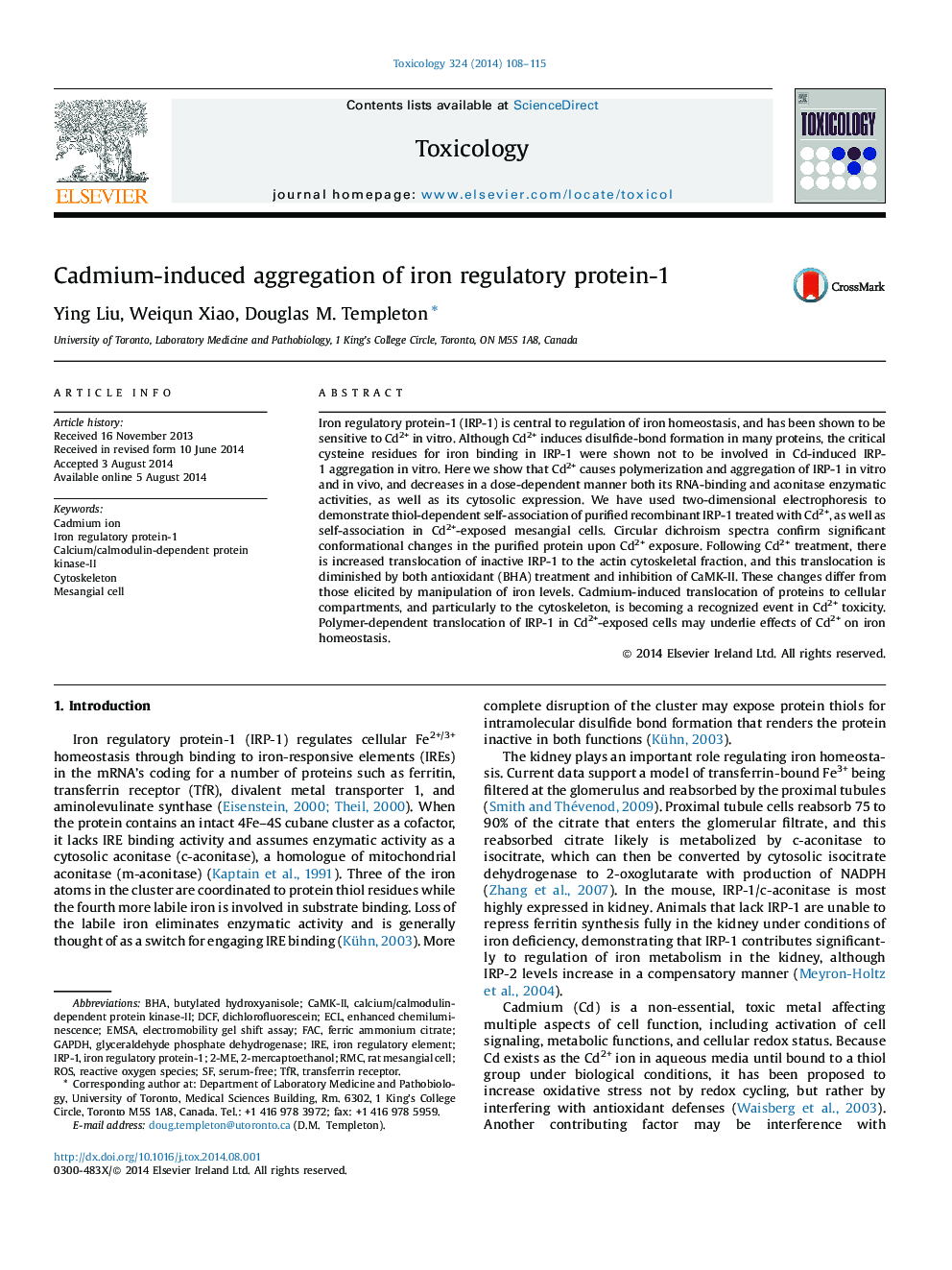| Article ID | Journal | Published Year | Pages | File Type |
|---|---|---|---|---|
| 2595531 | Toxicology | 2014 | 8 Pages |
Iron regulatory protein-1 (IRP-1) is central to regulation of iron homeostasis, and has been shown to be sensitive to Cd2+ in vitro. Although Cd2+ induces disulfide-bond formation in many proteins, the critical cysteine residues for iron binding in IRP-1 were shown not to be involved in Cd-induced IRP-1 aggregation in vitro. Here we show that Cd2+ causes polymerization and aggregation of IRP-1 in vitro and in vivo, and decreases in a dose-dependent manner both its RNA-binding and aconitase enzymatic activities, as well as its cytosolic expression. We have used two-dimensional electrophoresis to demonstrate thiol-dependent self-association of purified recombinant IRP-1 treated with Cd2+, as well as self-association in Cd2+-exposed mesangial cells. Circular dichroism spectra confirm significant conformational changes in the purified protein upon Cd2+ exposure. Following Cd2+ treatment, there is increased translocation of inactive IRP-1 to the actin cytoskeletal fraction, and this translocation is diminished by both antioxidant (BHA) treatment and inhibition of CaMK-II. These changes differ from those elicited by manipulation of iron levels. Cadmium-induced translocation of proteins to cellular compartments, and particularly to the cytoskeleton, is becoming a recognized event in Cd2+ toxicity. Polymer-dependent translocation of IRP-1 in Cd2+-exposed cells may underlie effects of Cd2+ on iron homeostasis.
